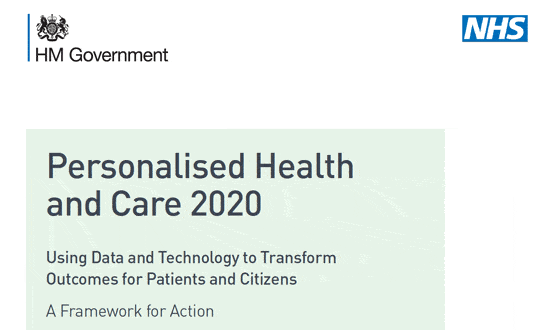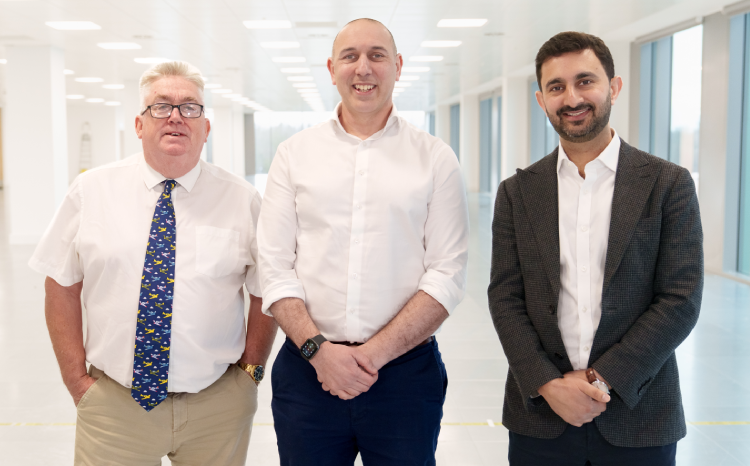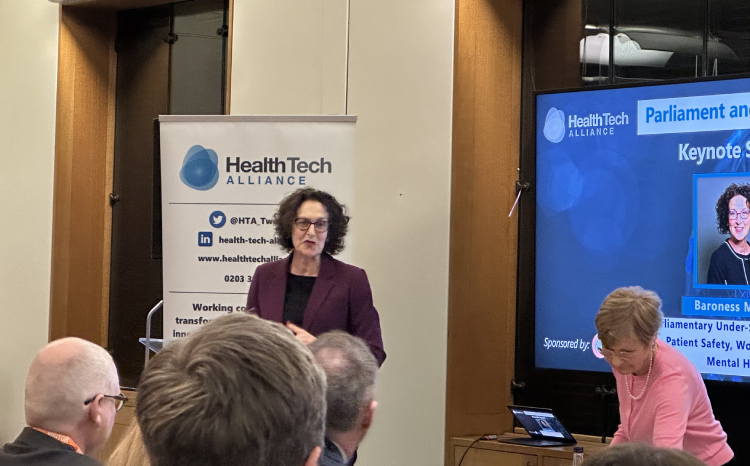2020 vision

A week after the National Information Board’s long-awaited plan for NHS IT and information was released, it is attracting cautious support; but also raising almost as many questions as it has answered.
‘Personalised Health and Care 2020’ emphasises that it is “not a strategy in the conventional sense” – and certainly not a “national plan” – but a “framework for action.”
It aims to show where IT can help with the ‘Five Year Forward View’ outlined by Simon Stevens, the chief executive of NHS England; starts to scope the parameters of national action, local initiative, and patient and user involvement; and indicates where financial and regulatory pressure might be applied.
A good start
Further detail is promised in a series of forthcoming ‘roadmaps’, but Karl Grundy, the head of EHI’s research arm, EHI Intelligence, sums up the cautious optimism that has been the initial response of many to the initial plan.
“I think it’s a better document than many thought would come out of the NHS,” he says, welcoming, in particular, its focus on interoperability, encouraging smaller suppliers, and promoting clinical leadership.
Similarly, Tola Sargeant, a research director at TechMarketView, says she was “pleasantly surprised” by the framework, while Natalie Bateman, head of health and social care at TechUK, describes its practical recommendations as “reassuring”.
Importantly, the strategy has also picked up initial support from trust and clinical IT leaders. Daniel Ray, director of informatics at University Hospital Birmingham NHS Foundation Trust and chair of EHI’s Health CIO Leaders Network, says it is “fundamentally saying the right thing.”
While Joe McDonald, a consultant psychiatrist in the North East, and chair of the advisory group for EHI’s CCIO Leaders Network, says: “I quite like the document – I think you have to read it properly.”
A third way
Personalised Health and Care 2020 follows a number of IT strategies that tried to achieve much the same ends – a networked NHS, good systems at individual organisations, new forms of interaction for patients – in different ways.
This means it must navigate a path between “letting a thousand flowers bloom” – a phrase associated with the 1998 strategy, Information for Health – and an overly centralised approach to IT systems delivery – associated with the 2000 strategy ‘21st Century IT’ and the subsequent National Programme for IT.
It must also take account of the rapidly developing world of consumer healthcare; which no longer encompasses just the ‘airline-style booking systems’ of the turn of the last century, but personal health records, mobile apps, and social networks.
The document attempts to do all this by setting out a role for national bodies in areas such as running national infrastructure, setting standards, making markets where trusts and suppliers might otherwise struggle, and backing PHRs and apps.
After that, it will be for local organisations to pick the systems and interfaces that work for them; but with the definite ‘stick’ of action by commissioners and regulators if they fail to “embrace the digital opportunity”.
Markus Bolton, the joint chief executive of System C, says the “sensible light touch” of the document and its focus on integration marks a progression from previous strategies, which dealt with getting basic IT into individual healthcare organisations.
“They’ve done a pretty good job of that… most hospitals have got pretty good basic infrastructure, and it’s definitely time for that next step to become joined-up healthcare,” he says.
Shane Tickell, chief executive of IMS Maxims, says the plan’s focus reaffirms his long-held view about the importance of local innovation. “Locally, you are best placed to make decisions on local needs and you can use all of your endeavour to try and do that – don’t wait for other people, get on with it yourself,” he advises.
However, there will be ‘but’s
Grundy says the plan’s focus on local innovation underpinned by national standards should also be good news for suppliers, since it should support new entrants to the market.
“I think the fact that they’re pushing on standards, especially open standards, is good because it opens up the opportunities for smaller suppliers in the community. It fits the interoperability agenda as well as encouraging new entrants into the market.”
However, Bolton sounds a note of caution about the focus on standards, noting the historical tendency of national initiatives to slow down the market. Any new standards, he says, need to be introduced as quickly as possible to prevent this happening.
“Sometimes when you get into these large standards projects, they can become a beast of a project and people stop coding for years and years. The standards need to be introduced at pace as systems are rolled out.”
The NIB framework re-iterates previous pledges to give patients access to their GP records by March, and then goes further, saying patients will be given read-write access to all of their care records by March 2018, while pilots are set up to link access with personalised health and care budgets.
Ray says the focus on patient access is “absolutely right”; and mirrors the work Birmingham has already done with its MyHealth@QEHB patient portal – the winner of an EHI Award this year.
However, he is quick to warn that organisations must make sure that access is provided in a way that makes clear to patients what they are viewing and how it relates to their care.
“Opening up more data to people; you’ve got to be supportive of that,” he says. “But you’ve got to get the balance right, so patients and carers understand data in the right way.”
Procurement is still an issue
Before patients can be given access to their records at all, the relevant systems must be in place; and if they are not in place must be procured and implemented. It is in this area that Grundy feels the plan is lacking in detail.
Personalised Health and Care 2020 mentions the G-Cloud government IT framework and the GP Systems of Choice framework for primary care as mechanisms that trusts can use to buy faster. But Grundy would have liked to see more focus on addressing local procurement and tender processes.
“If you read some of the tenders out there, they’re quite poor,” he says. “If you start out with a poor tender, generally you’ll end up with a poor project.”
Bateman says TechUK is also keen to see more attention paid to procurement, to make it easier for suppliers to work with organisations so they end up with the IT and projects they want.
“It’s something interesting we are looking at; what can we do as suppliers to help people buy and procure and commission?” she says. “We want to understand their capabilities and match them against their needs and requirements – perhaps with some sort of online platform to provide a holistic view of the market itself.”
Clinical engagement must be secured
Of course, the proposals mooted in the NIB strategy are not possible unless clinicians and other frontline staff both understand the importance of IT and are willing to make the most of its adoption.
The document acknowledges this, speaking about the importance of “engaging staff in driving forward the digital revolution themselves”, and Sargeant says change management and the upskilling of staff must be at the top of the NIB’s agenda. “If that doesn’t happen then, no matter how good the patient records might be, we won’t see the benefits.”
Ray supports this when speaking about the new skills that staff will need to make the best use of new data sets. “You can’t see a change in the use of data without bringing up the skills of the workforce,” he argues. “Otherwise it’s like giving a child a machine gun – you need to make sure they know how to use it properly.”
Dr McDonald says he is heartened by the NIB framework’s emphasis on empowering chief clinical information officers to lead local transformation programmes to support the adoption of IT. “It’s nice that we’ve gone from a pretty small crowd to being part of government policy in a fairly short period of time.”
However, he believes the NIB can further improve its focus on changing staff attitudes by ensuring they are represented on the board as it develops the road maps for the strategy’s implementation.
“When you look down the list [of those on the board], there aren’t many people – if any – actually involved in inputting the data. It’s all very well having a strategy, but you need to be connected to the front line.”
Success factors
Clinical engagement is just part of the health IT puzzle that many have tried to solve before without success. But Dr McDonald is confident that the IT skills of clinicians have improved since he worked for NHS Connecting for Health on the national programme.
He argues this will help to turn the framework’s rhetoric into reality. “I think healthcare professionals are more savvy – more IT-literate – than before, and I don’t think we’ll get fooled again. We know what we want in terms of the quality of healthcare systems. That gives us real traction.”
Ray is cautiously optimistic, noting the wide number of organisations that put together the document and the difficulty of implementing its vision. “It’s got to be a document that pleases a lot of people, but the proof will be in the pudding with what they actually deliver over the next five to six years.”
He says the document’s plans to bind in finance and regulation may be the key to whether it will deliver on its new, big targets – transitions of care without notes by 2018 and “all patient and care records to be digital, real-time and interoperable” by 2020.
“The vast majority of hospitals are moving in the right direction – whether everybody gets there or not will depend on whether there’s enough innovation in the system to encourage people to get it in place, or regulations that say they’ve got to be in place.”
In the end, it comes down to people
Tim Kelsey, the director of patients and information at NHS England, and chair of the NIB, has told EHI that the new targets are ‘hard stops’ – and must be met if the Five Year Forward View is to be delivered.
Tickell says it is the people behind the plan that will have a far more significant role to play in the success of the NIB’s vision than the document itself.
“This document won’t make it happen, Simon Stevens won’t make it happen; but there is a good team in NHS England who are doing their damnedest with limited resources to make this a reality.”




